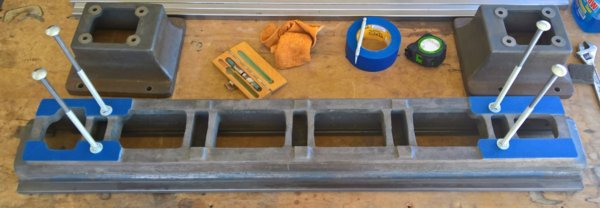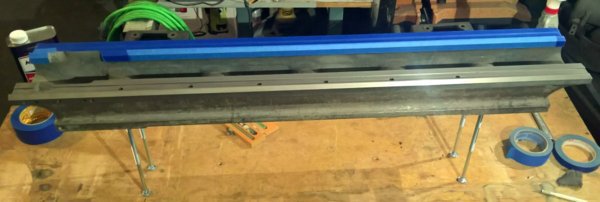I have a spray bottle with diluted "The Must for Rust", which is just the brand of Phosphoric Acid that I prefer, diluted with water in a 50:50 ratio. Once the part comes out of the ERR bath, I scrub it down with a medium grit Scotchbrite pad and I keep it wet until I get all the scum and paint off and then do a final rinse. I let the bulk of the water run off and then spray the part down with the diluted PA mix and set it aside to dry. This leaves a whitish layer on the part that prevents any rusting and it will last for months or even years if left undisturbed. I have an Emmert 4A machinist vise that I did this to about a decade ago and its sitting in a box until I get around to painting it - zero rust.
When I'm ready to prime, I wipe the part down with a rag lightly moistened with the same diluted mix and this dries in seconds. Then I spray on the primer and paint as usual. Sometimes I don't even bother wiping it; I just prime right on top of it, which is what the manufacturer recommends.
You should use the normal precautions you would take when working with any acid, even though Phosphoric Acid as supplied for this application is pretty weak. I use a respirator mask with cartridges, safety glasses and neoprene gloves and rubber boots when working with any acid but I admit that I've had to casually spray a little on a part and done it with no protection at all and had no issues; I do not recommend you do stupid things like this, though. Read the manufacturer's instructions and you'll be fine.
I've been using this method for a very long time. I've done very small parts to anvils to entire lawnmowers and never had any issues with the paint, nor have I had anything rust if the paint is not damaged. This stuff just works.
Over 40 years ago, I asked an auto body guy what they used to prep bare metal before painting their custom paint jobs. These guys did beautiful work on show cars. He told me they used Jasco Metal Etch, which turned out to be Phosphoric Acid. So, nothing new here, Mike.
Wish me Luck..



